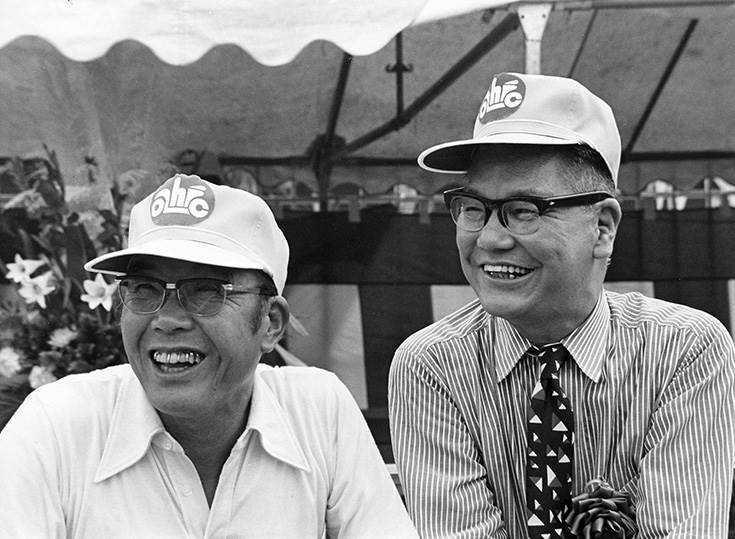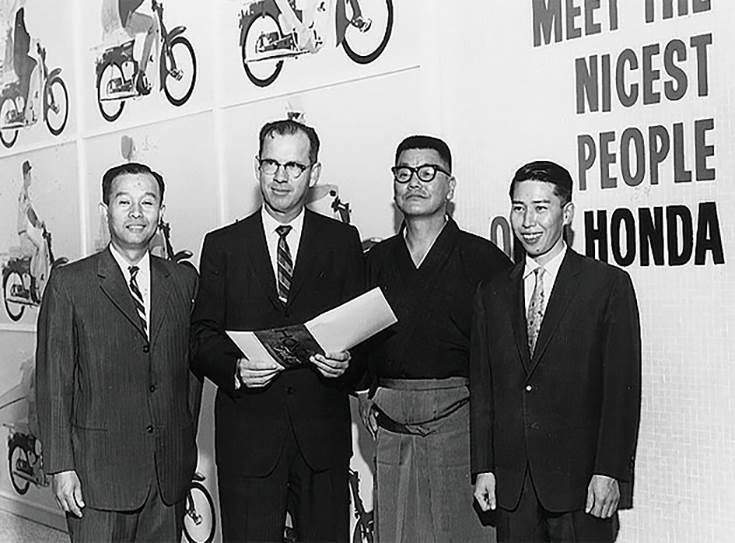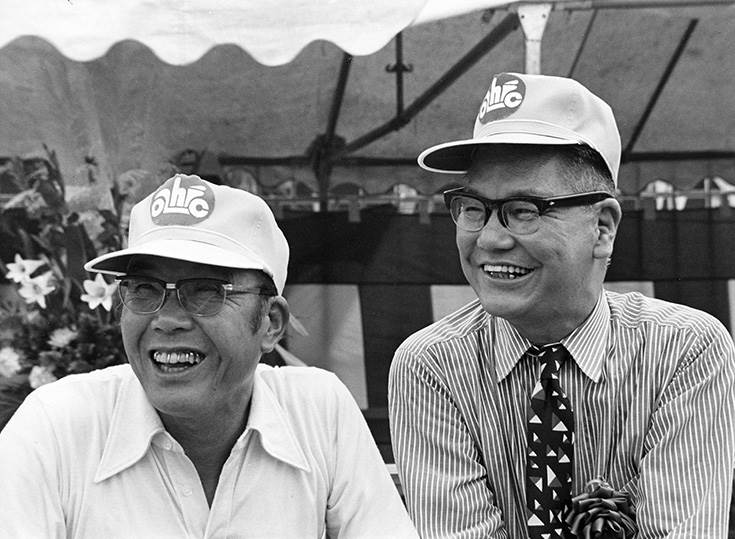Honda Motor co-founder Takeo Fujisawa to be inducted into Automotive Hall of Fame
Takeo Fujisawa, co-founder of Honda Motor Co, is to be inducted into the Automotive Hall of Fame at its awards ceremony on July 20 in Detroit. Fujisawa will join Honda founder Soichiro Honda, who was inducted in 1989 as the first Japanese automotive executive honoured by the Automotive Hall of Fame, located in Dearborn, Michigan.
The Automotive Hall of Fame honours and celebrates the accomplishments of individuals in the international motor vehicle industry through its awards program. Since its founding in 1939, the Hall has honoured nearly 800 men and women from around the world. Induction into the Automotive Hall of Fame is reserved for noteworthy individuals who created, shaped, and changed the automotive and mobility market. It is considered the single greatest honour in the automotive industry.
Born on November 10, 1910, Fujisawa originally aspired to become a teacher, but instead worked as a salesman for a steel products company and then for a lumber company when he met Soichiro Honda in August 1949, about one year after the founding of Honda Motor Co., a small local venture in Hamamatsu, Japan. It was right after the launch of the Dream D-Type, considered to be Honda’s first full-fledged motorcycle product. While the two men were equipped with different personalities and skill sets, Honda and Fujisawa hit it off almost immediately and began deep discussions about their approach to business and dreams for the future.
Quickly developing a trusting relationship, they established a shared vision for the future of the company with Fujisawa joining Honda Motor in October 1949. As a president of the company, Honda retained responsibility for product design and technology development and manufacturing operations, inventing many innovative vehicles including Super Cub, the world’s best-selling mobility product. Fujisawa backed him up as his right hand with responsibility for the business side of the company, including sales, finance and marketing.
Fujisawa’s marketing savvy, strong business sense, and keen ability to chart unique paths to growth proved the perfect match to Soichiro Honda’s engineering acumen and vision for mobility. The partnership lasted 25 years, until March 1973 when Messrs. Honda and Fujisawa retired together. From the beginning, Fujisawa had an enormous impact on Honda’s business globally and in the U.S., where he played the key role in the approach to the American market.
 1973: Soichiro Honda (left) and Takeo Fujisawa (right), shortly after announcing their retirements as president and executive president, respectively. They led Honda from a start-up motorcycle company into a global enterprise focused on multiple forms of mobility.
1973: Soichiro Honda (left) and Takeo Fujisawa (right), shortly after announcing their retirements as president and executive president, respectively. They led Honda from a start-up motorcycle company into a global enterprise focused on multiple forms of mobility.
Fujisawa made several lasting and impactful business decisions that are still relevant today:
Starting Honda business in the US
In 1959, and by then the senior managing director of Honda, Fujisawa made the challenging decision to establish American Honda as Honda’s first subsidiary outside Japan. At the time, the entire U.S. motorcycle industry sold no more than 60,000 units annually — mostly larger bikes. One member of the team recommended expansion in Asia, where small motorcycles from Europe, like those made by Honda, were already in use. He suggested that America, the ‘land of the automobile’, was too difficult a target for Honda.
Fujisawa though had another idea. “On second thought, let’s do America,” he said. “To succeed in the U.S. is to succeed worldwide. To take up the challenge of the American market may be the most difficult thing to do, but it’s a critical step in expanding the export of our products.”
Creating an independent US dealer network
Fujisawa adopted many innovative sales and marketing strategies in Japan and the U.S. This included the decision to start motorcycle sales by establishing Honda’s own dealer network. Despite suggestions that Honda should follow the approach of other Japanese companies and rely on a trading company to launch U.S. sales, Honda forged relationships with many smaller dealers, even those with no history in the motorcycle industry, and successfully expanded business from the West Coast across America. By the mid-1960s, Honda was the best-selling motorcycle brand in America.
 1963: Takeo Fujisawa (2nd from right) at the opening of American Honda’s second headquarters in Gardena, California. It was his decision to establish Honda’s first overseas subsidiary in the United States.
1963: Takeo Fujisawa (2nd from right) at the opening of American Honda’s second headquarters in Gardena, California. It was his decision to establish Honda’s first overseas subsidiary in the United States.
Setting up a separate R&D company
In 1960, based on Fujisawa’s initiative, Honda R&D Co., Ltd. was created as a separate company. Fujisawa conceived the idea with two objectives: to give Honda engineers the freedom to create new value without being constrained by the ups and downs of daily business and to protect Honda’s ability to sustain this innovation in the future when they could no longer rely on the genius of Soichiro Honda. The new R&D company ushered in an era of incredible technological and product innovation, and entering new business areas including the automobile and aviation industries. Honda R&D’s focus on research and creating new value in mobility continues to this day.
Images: Honda Motor Co
ALSO READ:
Ratan Tata inducted into 2015 Automotive Hall Of Fame
Toyota founder Kiichiro Toyoda inducted into Automotive Hall of Fame
Hyundai Group chairman Mong-Koo Chung inducted into Automotive Hall of Fame
